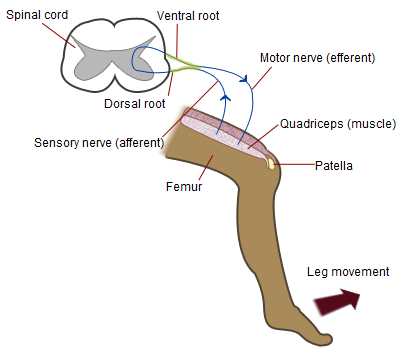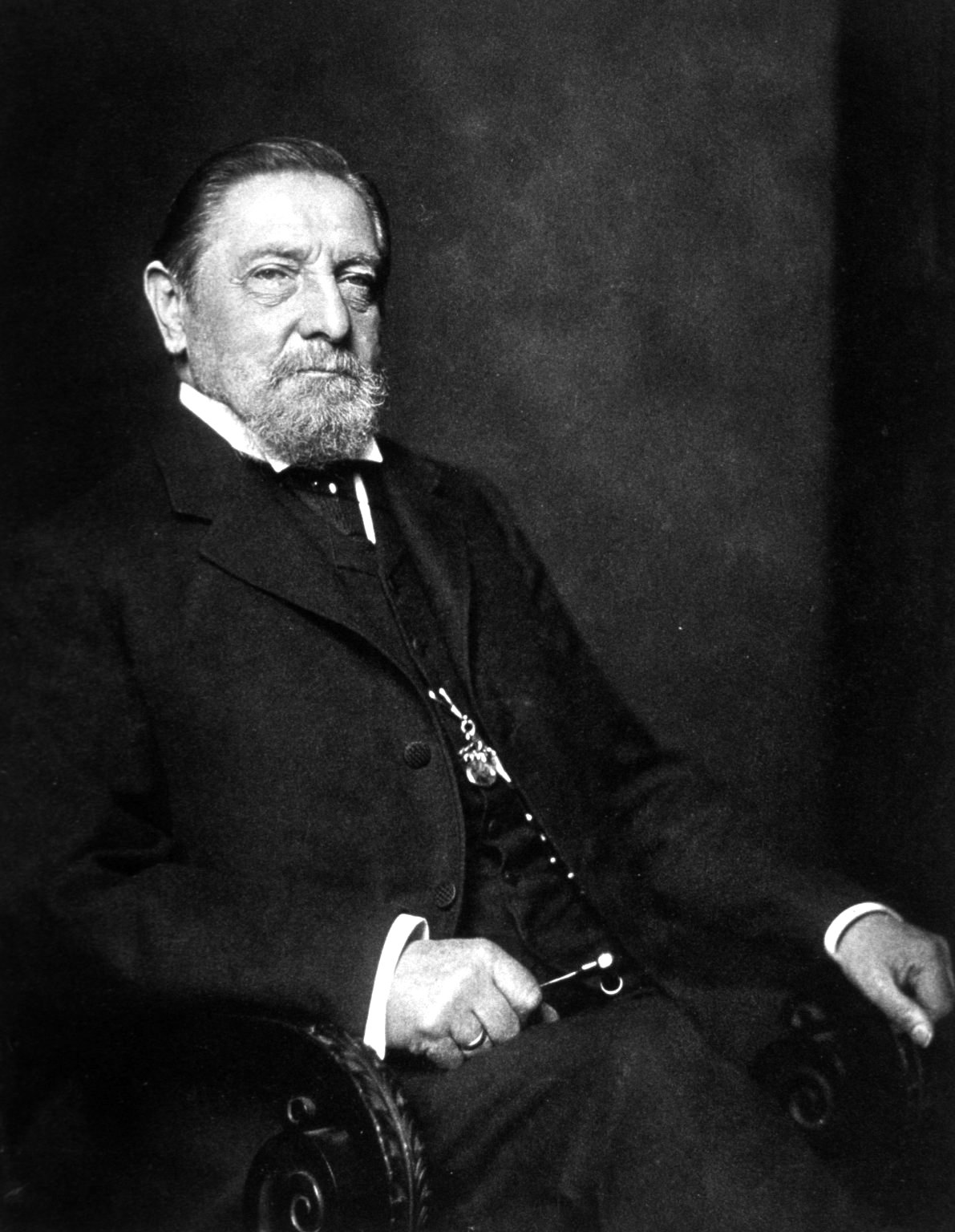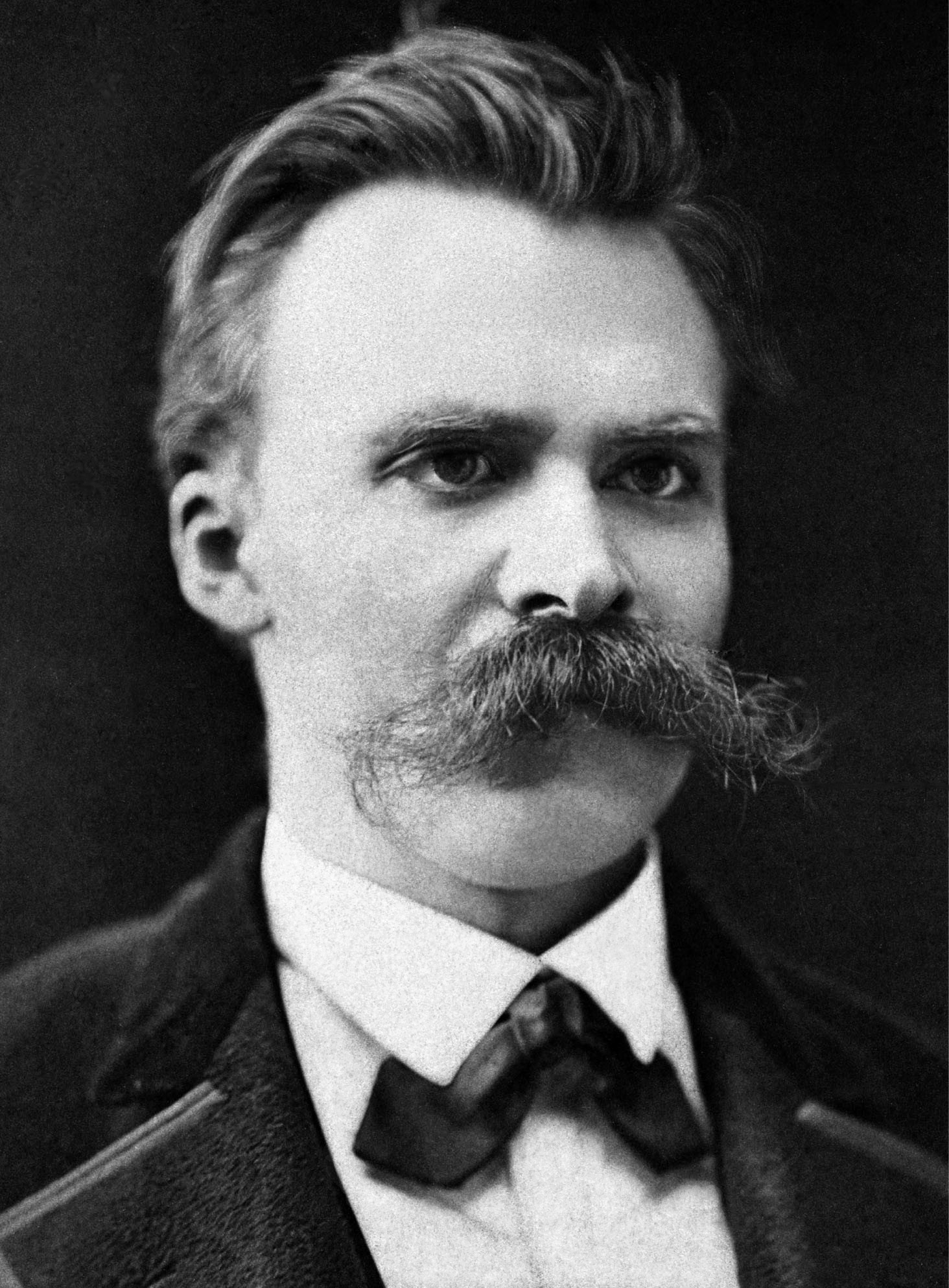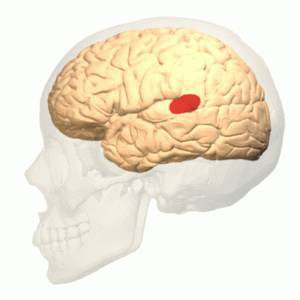|
Karl Friedrich Otto Westphal
Karl Friedrich Otto Westphal (23 March 1833, in Berlin – 27 January 1890, in Kreuzlingen) was a German psychiatrist from Berlin. He was the son of Otto Carl Friedrich Westphal (1800–1879) and Karoline Friederike Heine and the father of Alexander Karl Otto Westphal (1863-1941). He was married to Klara, daughter of the banker Alexander Mendelssohn. Academic career After receiving his doctorate, he worked at the Berlin Charité, and subsequently became an assistant in the department for the mentally ill under Wilhelm Griesinger (1817–1868) and Karl Wilhelm Ideler (1795–1860). In 1869 he became an associate professor of psychiatry, as well as a clinical instructor in the department for mental and nervous diseases, In 1874 he attained the title of full professor of psychiatry. Achievements in medicine Westphal's contributions to medical science are many; in 1871 he coined the term "agoraphobia", when he observed that three male patients of his displayed extreme anxiety an ... [...More Info...] [...Related Items...] OR: [Wikipedia] [Google] [Baidu] |
Westphal
Westphal or Westphall may refer to the following people: * Ari Westphal (born 1994), Brazilian fashion model *Bernd Westphal (born 1960), German politician * Brigitta Westphal (born 1944), German painter * Carlo Westphal (born 1985), German professional road bicycle racer * Christoph Westphal, pharmaceutical executive *Daniel Westphal, Northern Mariana Islander footballer *Dirk Westphal (born 1963), American artist * Edwin Westphal (born 1966), Guatemalan former professional football forward * Ernst Oswald Johannes Westphal (1919–1990), South African linguist *Euler Renato Westphal, Brazilian Lutheran theologian * Frank Westphal, (1889–1948), American musician *George Augustus Westphal (1785–1875), English Royal Navy officer *Gert Westphal (1920–2002), German-Swiss actor, recitator and director *Heidi Westphal, German rower and Olympic medalist *J. G. Westphal (1824–1859), German astronomer and mathematician * James Westphal (1930–2004), American academic, scientist, en ... [...More Info...] [...Related Items...] OR: [Wikipedia] [Google] [Baidu] |
Spinal Cord Diseases
The spinal cord is a long, thin, tubular structure made up of nervous tissue, which extends from the medulla oblongata in the brainstem to the lumbar region of the vertebral column (backbone). The backbone encloses the central canal of the spinal cord, which contains cerebrospinal fluid. The brain and spinal cord together make up the central nervous system (CNS). In humans, the spinal cord begins at the occipital bone, passing through the foramen magnum and then enters the spinal canal at the beginning of the cervical vertebrae. The spinal cord extends down to between the first and second lumbar vertebrae, where it ends. The enclosing bony vertebral column protects the relatively shorter spinal cord. It is around long in adult men and around long in adult women. The diameter of the spinal cord ranges from in the cervical and lumbar regions to in the thoracic area. The spinal cord functions primarily in the transmission of nerve signals from the motor cortex to the body, and f ... [...More Info...] [...Related Items...] OR: [Wikipedia] [Google] [Baidu] |
Knee Jerk
The patellar reflex, also called the knee reflex or knee-jerk, is a stretch reflex which tests the L2, L3, and L4 segments of the spinal cord. Mechanism Striking of the patellar tendon with a reflex hammer just below the patella stretches the muscle spindle in the quadriceps muscle. This produces a signal which travels back to the spinal cord and synapses (without interneurons) at the level of L3 or L4 in the spinal cord, completely independent of higher centres. From there, an alpha motor neuron conducts an efferent impulse back to the quadriceps femoris muscle, triggering contraction. This contraction, coordinated with the relaxation of the antagonistic flexor hamstring muscle causes the leg to kick. There is a latency of around 18 ms between stretch of the patellar tendon and the beginning of contraction of the quadriceps femoris muscle. This is a reflex of proprioception which helps maintain posture and balance, allowing to keep one's balance with little effort or c ... [...More Info...] [...Related Items...] OR: [Wikipedia] [Google] [Baidu] |
Patellar
The patella, also known as the kneecap, is a flat, rounded triangular bone which articulates with the femur (thigh bone) and covers and protects the anterior articular surface of the knee joint. The patella is found in many tetrapods, such as mice, cats, birds and dogs, but not in whales, or most reptiles. In humans, the patella is the largest sesamoid bone (i.e., embedded within a tendon or a muscle) in the body. Babies are born with a patella of soft cartilage which begins to ossify into bone at about four years of age. Structure The patella is a sesamoid bone roughly triangular in shape, with the apex of the patella facing downwards. The apex is the most inferior (lowest) part of the patella. It is pointed in shape, and gives attachment to the patellar ligament. The front and back surfaces are joined by a thin margin and towards centre by a thicker margin. The tendon of the quadriceps femoris muscle attaches to the base of the patella., with the vastus intermedius muscl ... [...More Info...] [...Related Items...] OR: [Wikipedia] [Google] [Baidu] |
Westphal's Sign
Westphal's sign is the clinical correlate of the absence or decrease of patellar reflex or knee jerk. Patellar reflex or knee jerk is a kind of deep or stretch reflex where an application of a stimulus to the patellar tendon such as strike by a solid object or hammer caused the leg to extend due to such stimulus causes the quadriceps femoris muscle to contract. It is named for Karl Friedrich Otto Westphal (1833-1890). __TOC__ Associated conditions Westphal's sign has a clinical significance used in determining neurodisorders or diseases such as: * receptor damage, peripheral nerve disease, involving the dorsal(sensory) columns of the spinal cord and cerebellar lesions * lesions present within the motor cortex of the brain or the pyramidal tracts which it combined with muscular spasms * complete interruption of sensory and/or motor impulse transmission in the femoral nerve References * Symptoms and signs: Nervous system Examination of the knee {{med-sign-s ... [...More Info...] [...Related Items...] OR: [Wikipedia] [Google] [Baidu] |
Ernst Viktor Von Leyden
Ernst Viktor von Leyden (20 April 1832 – 5 October 1910) was a German internist from Danzig. Biography He studied medicine at the Friedrich-Wilhelms-Institut in Berlin, and was a pupil of Johann Lukas Schönlein (1793–1864) and Ludwig Traube (1818–1876). He was later a medical professor at the universities of Königsberg, Strassburg and Berlin. Leyden was an important influence to the career of Ludwig Edinger (1855–1918), and during his tenure at the University of Königsberg worked closely with Otto Spiegelberg (1830–1881) and Friedrich Daniel von Recklinghausen (1833–1910).''Ernst Viktor von Leyden'' at Who Named It Among his better known students and assistants were [...More Info...] [...Related Items...] OR: [Wikipedia] [Google] [Baidu] |
Ataxia
Ataxia is a neurological sign consisting of lack of voluntary coordination of muscle movements that can include gait abnormality, speech changes, and abnormalities in eye movements. Ataxia is a clinical manifestation indicating dysfunction of the parts of the nervous system that coordinate movement, such as the cerebellum. Ataxia can be limited to one side of the body, which is referred to as hemiataxia. Several possible causes exist for these patterns of neurological dysfunction. Dystaxia is a mild degree of ataxia. Friedreich's ataxia has gait abnormality as the most commonly presented symptom. The word is from Greek α- negative prefix+ -τάξις rder= "lack of order". Types Cerebellar The term cerebellar ataxia is used to indicate ataxia due to dysfunction of the cerebellum. The cerebellum is responsible for integrating a significant amount of neural information that is used to coordinate smoothly ongoing movements and to participate in motor planning. Although ... [...More Info...] [...Related Items...] OR: [Wikipedia] [Google] [Baidu] |
Michel Foucault
Paul-Michel Foucault (, ; ; 15 October 192625 June 1984) was a French philosopher, historian of ideas, writer, political activist, and literary critic. Foucault's theories primarily address the relationship between power and knowledge, and how they are used as a form of social control through societal institutions. Though often cited as a structuralist and postmodernist, Foucault rejected these labels. His thought has influenced academics, especially those working in communication studies, anthropology, psychology, sociology, criminology, cultural studies, literary theory, feminism, Marxism and critical theory. Born in Poitiers, France, into an upper-middle-class family, Foucault was educated at the Lycée Henri-IV, at the École Normale Supérieure, where he developed an interest in philosophy and came under the influence of his tutors Jean Hyppolite and Louis Althusser, and at the University of Paris ( Sorbonne), where he earned degrees in philosophy and psychol ... [...More Info...] [...Related Items...] OR: [Wikipedia] [Google] [Baidu] |
Karl Wernicke
Carl (or Karl) Wernicke (; ; 15 May 1848 – 15 June 1905) was a German physician, anatomist, psychiatrist and neuropathologist. He is known for his influential research into the pathological effects of specific forms of encephalopathy and also the study of receptive aphasia, both of which are commonly associated with Wernicke's name and referred to as Wernicke encephalopathy and Wernicke's aphasia, respectively. His research, along with that of Paul Broca, led to groundbreaking realizations of the localization of brain function, specifically in speech. As such, Wernicke's area (a.k.a. Wernicke's Speech Area) has been named after the scientist. Biography Wernicke was born on May 15, 1848, in Tarnowitz, a small town in Upper Silesia, Prussia, now Tarnowskie Góry, Poland. He obtained his secondary education at the gymnasium in Oppeln, which is a school near the university of Breslau. Wernicke then studied medicine at the University of Breslau and did graduate work st ... [...More Info...] [...Related Items...] OR: [Wikipedia] [Google] [Baidu] |
Carl Moeli
Carl Franz Moeli (10 May 1849 – 4 November 1919) was a German neurologist and psychiatrist born in Kassel. He studied medicine in Marburg, Würzburg and Leipzig followed by work as an assistant at clinics in Rostock and Munich. In 1880 he became an assistant to Karl Westphal (1833–1890) in the psychiatric clinic at the Berlin-Charité. At the Charité he performed anatomical studies of the optic nerve, research involving the pupillary reaction of mental patients, the effects of syphilis on the brain, and clinical studies of alcoholism. In 1883 he received his habilitation for psychiatry, and during the following year worked as an assistant medical director at the ''Städtische Irrenanstalt Dalldorf'' in Berlin. In 1893 he became the first director of the newly built ''Irrenanstalt Herzberge'', a position he maintained until 1914. Also he played an important role as adviser to the German government in regards to mental health issues. One of Moeli's better known assistants at ... [...More Info...] [...Related Items...] OR: [Wikipedia] [Google] [Baidu] |
Karl Fürstner
Karl Fürstner (7 June 1848 - 25 April 1906) was a German neurologist and psychiatrist born in Strasburg, Uckermark. He studied medicine in Würzburg and Berlin, where he received his doctorate in 1871. In 1872 he was an assistant at the pathological institute of the University of Greifswald, and afterwards worked under Karl Westphal (1833-1890) in the psychiatric department at the Berlin-Charité. In 1878 he became the first physician to hold the chair of psychiatry at the University of Heidelberg. He kept this position until 1890, when he became professor of nervous and mental diseases at the University of Strasbourg. At Heidelberg his vacancy was filled by Emil Kraepelin (1856-1926). Among Fürstner's better known assistants was eugenicist Alfred Hoche (1865-1943). Fürstner specialized in the fields of neuropathology and neuroanatomy. His work involved studies of progressive paralysis, the localization of brain tumors, and research of disorders that included postpartum p ... [...More Info...] [...Related Items...] OR: [Wikipedia] [Google] [Baidu] |
Hermann Oppenheim
Hermann Oppenheim (1 January 1858 – 5 May 1919) was one of the leading neurologists in Germany. Life and work Oppenheim is the son of Juda Oppenheim (1824–1891), the long-time rabbi of the Warburg synagogue community , and his wife, Cäcilie, née Steeg (1822–1898). He studied medicine at the Universities of Berlin, Göttingen and Bonn. He started his career at the Charité-Hospital in Berlin as an assistant to Karl Westphal (1833–1890). In 1891 Oppenheim opened a successful private hospital in Berlin. In 1894, Oppenheim was the author of a textbook on nervous diseases titled ''Lehrbuch der Nervenkrankheiten für Ärzte und Studierende'', a book that soon became a standard in his profession. It was published in several editions and languages, and is considered one of the best textbooks on neurology ever written. He also published significant works on tabes dorsalis, alcoholism, anterior poliomyelitis, syphilis, multiple sclerosis and traumatic neurosis. In the fiel ... [...More Info...] [...Related Items...] OR: [Wikipedia] [Google] [Baidu] |




